
La Scala is a famous opera house in Milan, Italy. The theatre was inaugurated on 3 August 1778 and was originally known as the Nuovo Regio Ducale Teatro alla Scala. The premiere performance was Antonio Salieri's Europa riconosciuta.

Teatro Regio di Parma, originally constructed as the Nuovo Teatro Ducale, is an opera house and opera company in Parma, Italy.

Clelia Maria Giuseppa (Giuseppina) Strepponi was a nineteenth-century Italian operatic soprano of great renown and the second wife of composer Giuseppe Verdi.
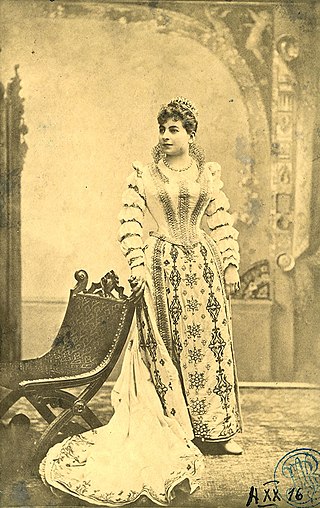
Hariclea Darclée was a celebrated Romanian operatic spinto soprano who had a three-decade-long career.

The Teatro della Pergola is an historic opera house in Florence, Italy. It is located in the centre of the city on the Via della Pergola, from which the theatre takes its name. It was built in 1656 under the patronage of Cardinal Gian Carlo de' Medici to designs by the architect Ferdinando Tacca, son of the sculptor Pietro Tacca; its inaugural production was the opera buffa, Il potestà di Colognole by Jacopo Melani. The opera house, the first to be built with superposed tiers of boxes rather than raked semi-circular seating in the Roman fashion, is considered to be the oldest in Italy, having occupied the same site for more than 350 years.

The Teatro Lirico Giuseppe Verdi is an opera house located in Trieste, Italy and named after the composer Giuseppe Verdi. Privately constructed, it was inaugurated as the Teatro Nuovo to replace the smaller 800-seat "Cesareo Regio Teatro di San Pietro" on 21 April 1801 with a performance of Johann Simon Mayr's Ginevra di Scozia. Initially, the Nuovo had 1,400 seats. In 1821, it became known as the Teatro Grande.

The Teatro Comunale Alighieri is an opera house located at 2 Via Mariani in Ravenna, Italy and designed by the Venetian architects, Tommaso Meduna and his brother, Giambattista who had designed the second La Fenice theatre after the fire of 1836. The new Teatro Comunale Alighieri was inaugurated on 15 May 1852 with a production of Meyerbeer's Robert le diable, followed by Giovanni Pacini's Medea.

The Teatro Comunale di Firenze is an opera house in Florence, Italy. It was originally built as the open-air amphitheatre, the Politeama Fiorentino Vittorio Emanuele, which was inaugurated on 17 May 1862 with a production of Donizetti's Lucia di Lammermoor and which seated 6,000 people. It became the focus on cultural life in the city. After closure caused by fire, it reopened in April 1864 and acquired a roof in 1882. By 1911 it had both electricity and heating.
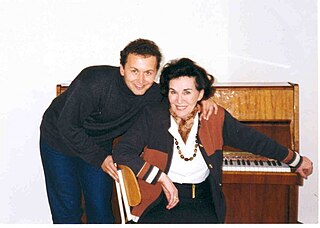
Radmila Bakočević, is a Serbian operatic soprano who had a major international opera career that began in 1955 and ended upon her retirement from the stage in 2004. During her career, she sang at most of the world's important opera houses, including performances throughout Europe, North and South America. She forged important long-term artistic partnerships with two opera houses during her career: the National Theatre in Belgrade and the Vienna State Opera.
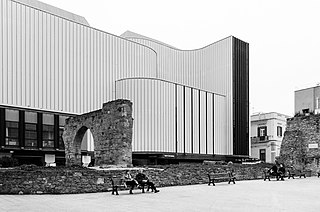
The Theatre Nuovo Teatro Giuseppe Verdi of Brindisi, Italy was inaugurated on December 20, 2006, with a concert directed by Maestro Riccardo Muti. Since 2022 Maestro Stefano Miceli is the chairman of the theatre foundation.

Erminia Frezzolini was an Italian operatic soprano. She excelled in the coloratura soprano repertoire, drawing particular acclaim in the bel canto operas of Gaetano Donizetti and Vincenzo Bellini. She was married to tenor Antonio Poggi from 1841 to 1846.
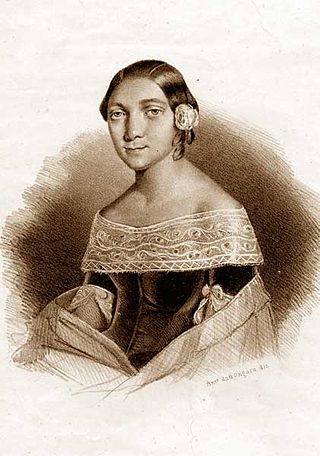
Marianna Barbieri-Nini was an Italian operatic soprano who had an active career in Italy's major opera houses from 1840 through 1856. She also made appearances at the Liceu in Barcelona, the Teatro Real in Madrid, Her Majesty's Theatre in London, and at theatres in Paris. She possessed a powerful voice with coloratura facility and was known for her highly dramatic singing and acting. She was especially admired in the title roles of Gaetano Donizetti's Anna Bolena and Gioachino Rossini's Semiramide. She was also successful in the operas of Giuseppe Verdi, notably creating roles in the world premieres of three of his works.

The Teatro de Cristóbal Colón, also known as the "Teatro Colón", is located in Bogotá, Colombia and it is the nation's National Theatre. It was built in the Neoclassical style by the Italian architect Pietro Cantini in 1885 and inaugurated on 27 October 1892. on the occasion of the fourth centenary of the discovery of America with a performance of Verdi's Ernani.

The Teatro Alfieri was a major theatre and opera house in 18th and 19th century Florence, located at Via dell'Ulivo #6 corner Via Pietrapiana in the Florence, region of Tuscany, Italy.

The following is a compilation of memorials to the composer Giuseppe Verdi in the form of physical monuments and institutions and other entities named after him.

The Teatro Carcano is a theatre in Milan, Italy, located at 63 Corso di Porta Romana. Although now exclusively devoted to plays and dance, it served as an opera house for much of the 19th century and saw the premieres of several important operas. Completed in 1803, the theatre was commissioned by the Milanese aristocrat and theatre-lover Giuseppe Carcano and originally designed by Luigi Canonica. Over the succeeding two centuries it has undergone several restructurings and renovations and for a time in the mid-20th century functioned as a cinema.

The Teatro Flavio Vespasiano is the main theatre and opera house in Rieti. It was opened on 20 September 1983, after ten years of work and finishing touches; directed by architect Achille Sfondrini. It takes its name from the Roman emperor Titus Flavius Vespasian who was born in sabina.

Svetla Vassileva is a Bulgarian opera singer (soprano).

Teatro Coccia is the main opera house in Novara, and is also the most important "historical" theatres in Piedmont. It faces along via Fratelli Rosselli, and delimits piazza dei Martiri to the west and piazza Giacomo Puccini to the east.
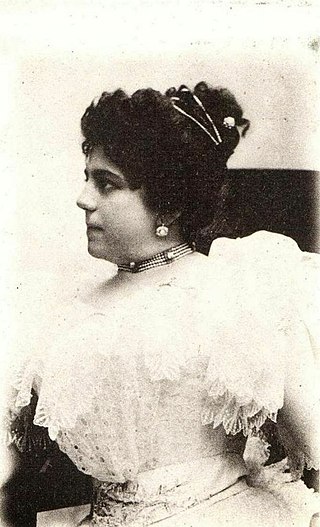
Adalgisa Gabbi was an Italian operatic soprano. After her 1875 debut in Lecco as Maria in Filippo Marchetti's Ruy Blas, she first made a name abroad, performing in Poland, Latin America, and London. It was not until the late 1880s that she established herself in Italy, performing in Turin, Naples, and in Milan, where she appeared in December 1889 at La Scala as Eva in the Italian premiere of Wagner's Die Meistersinger von Nürnberg.





















